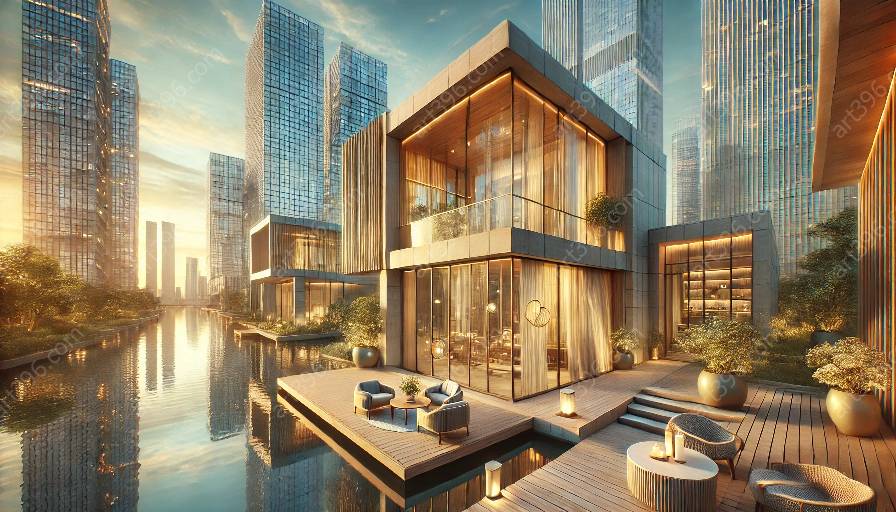Passive design principles play a critical role in shaping sustainable and energy-efficient architecture. By harnessing natural elements and optimizing material selection, architects and builders can create structures that are not only environmentally friendly but also aesthetically appealing and functional. In this comprehensive guide, we delve into the principles of passive design and explore how they influence material selection in the context of building materials and methods.
Understanding Passive Design
Passive design entails designing and orienting buildings to maximize natural resources such as sunlight, shade, and wind, while minimizing reliance on mechanical systems for heating, cooling, and ventilation. By embracing the local climate and environmental conditions, passive design seeks to create comfortable living and working spaces that reduce energy consumption and environmental impact.
Key principles of passive design include:
- Orientation: Proper building orientation maximizes solar gain in winter and minimizes heat gain in summer, reducing the need for mechanical heating and cooling systems.
- Insulation: Effective insulation utilization helps regulate internal temperatures by minimizing heat transfer through building structures, contributing to energy efficiency and comfort.
- Shading: Strategic shading elements such as eaves, overhangs, and vegetation prevent excessive solar heat gain, enhancing indoor comfort without compromising natural lighting.
- Ventilation: Natural ventilation systems, including operable windows and architectural features that promote airflow, optimize air quality and thermal comfort while reducing reliance on mechanical ventilation.
- Thermal Mass: Materials with high thermal mass, such as masonry and concrete, store and release heat slowly, stabilizing indoor temperatures and reducing temperature fluctuations.
Influence of Passive Design on Material Selection
Passive design principles directly influence material selection in architecture and building methods, guiding the choice of materials that align with sustainability, energy efficiency, and environmental responsibility.
Here's how passive design principles influence material selection:
Sustainability and Environmental Impact:
When applying passive design principles, architects and builders prioritize materials with low environmental impact, including renewable, recyclable, and locally sourced resources. Sustainable materials such as timber, bamboo, and recycled composites are favored for their minimal carbon footprint and long-term ecological benefits.
Thermal Performance:
Materials selected for their thermal performance, such as high-performance insulation, low-conductivity windows, and reflective roof coatings, contribute to the overall energy efficiency of a structure. By integrating materials with excellent thermal properties, passive design maximizes comfort and minimizes the need for artificial heating and cooling.
Daylighting and Shading:
Incorporating materials that facilitate natural daylighting and shading supports passive design strategies aimed at optimizing natural light while controlling solar heat gain. Transparent and translucent materials, along with shading devices and light-diffusing surfaces, enable architects to achieve a balanced and energy-efficient internal lighting environment.
Durability and Longevity:
Passive design emphasizes the selection of durable, low-maintenance materials that can withstand environmental stressors and promote long-term building performance. Materials such as weather-resistant cladding, corrosion-resistant metalwork, and durable finishes contribute to the overall resilience and sustainability of a structure.
Maintenance and Life-Cycle Cost:
Material selection influenced by passive design principles considers the long-term maintenance requirements and life-cycle costs of building components. Opting for materials with minimal maintenance needs, extended life spans, and cost-effective life-cycle performance aligns with the holistic approach to sustainable and energy-efficient architecture.
Conclusion
Passive design principles are integral to the creation of environmentally conscious, energy-efficient, and comfortable architectural spaces. By understanding and implementing these principles, architects and builders can curate material selections that not only fulfill aesthetic and functional requirements but also contribute to the sustainable and responsible design of structures. The synergy between passive design and material selection ultimately shapes the built environment, fostering a harmonious relationship with nature and ensuring a positive impact on both occupants and the planet.





























































